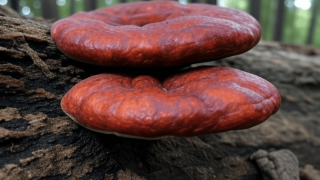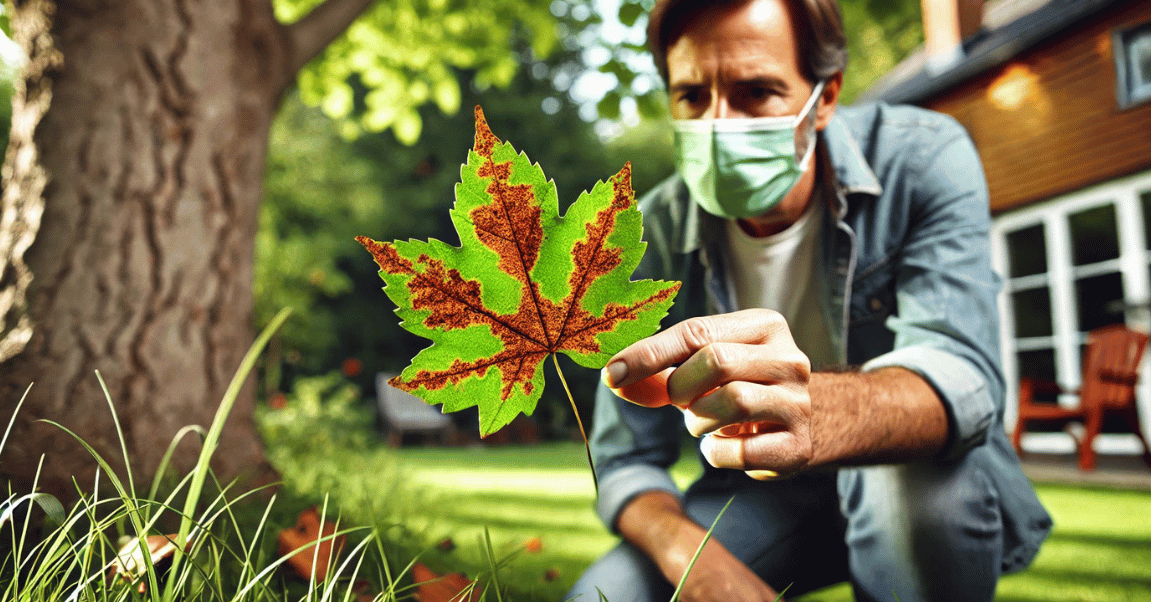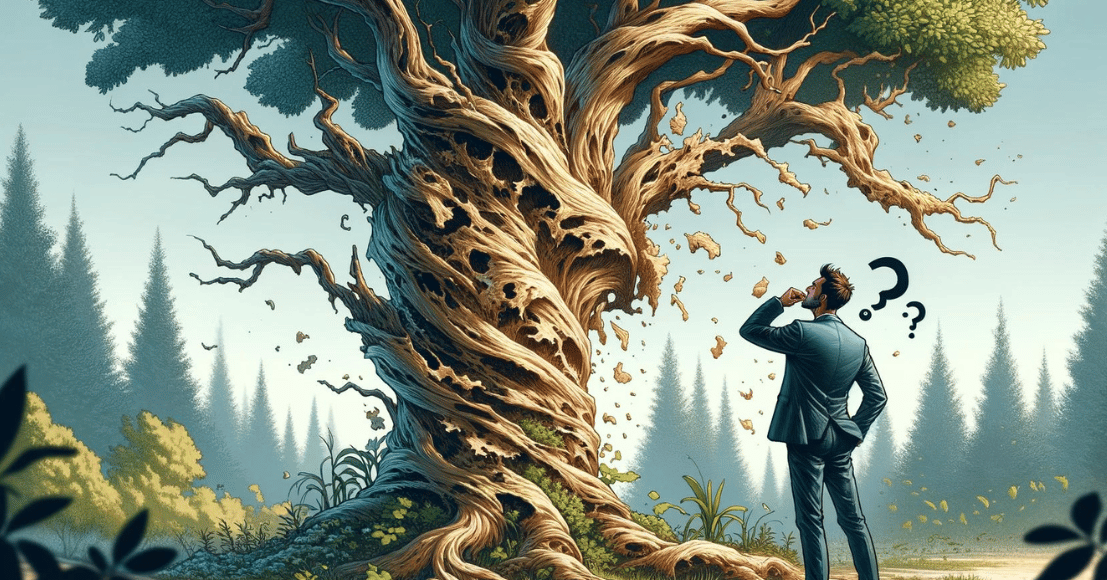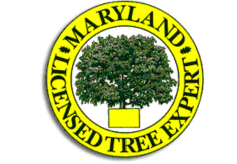Ganoderma applanatum is a type of fungus that grows on hardwood trees. It is one of the most recognizable bracket fungi in the world. Many people know it as “Artist’s Fungus” or “Artist’s Bracket.” These names come from the white pore surface on the underside of the fungus. When scratched, this surface turns dark brown, allowing people to create detailed etchings.
As arborists, we see Ganoderma applanatum often on old hardwood logs, stumps, and decaying tree trunks. While it has artistic uses, it can also be a sign of decay in trees. Knowing how to identify it is important for both nature lovers and property owners.
Common Names and Identification
Ganoderma applanatum has several scientific and common names. You may hear it called Artist’s Fungus, Artist’s Bracket, or by its older botanical name Boletus applanatus. It belongs to the Ganoderma genus, which also includes species like Ganoderma australe, Ganoderma lobatum, Ganoderma megaloma, and Ganoderma resinaceum.
It forms large, hard brackets that grow from the wood of hardwood trees. The top surface is usually furrowed and lumpy. Its color ranges from brown to gray, sometimes with a slightly lighter edge. Underneath, you will find a smooth white to gray pore surface. This underside is the “canvas” used by artists.
When cut, the flesh inside is woody and tough. The color of the flesh is brownish or cinnamon. The fungus grows in a flat, shelf-like shape, often stacked in layers on the same tree. Unlike softer fungi, it is perennial, meaning it can continue growing year after year, adding new layers to the bracket.
Ganoderma applanatum typically grows on hardwood logs and stumps. It is often found on maples, oaks, and other broadleaf trees. In urban settings, you may see it on older or declining landscape trees. If you spot it on a living tree, it can indicate internal decay, as this species is a white rot fungus that breaks down lignin in the wood.
Habitat and Life Cycle
Ganoderma applanatum prefers temperate climates and can be found worldwide. It is a saprotroph and sometimes a parasite. As a saprotroph, it feeds on dead or decaying wood. As a parasite, it can slowly weaken living trees by rotting their heartwood.
The life cycle begins when spores land on a suitable substrate, such as exposed wood or a wound in the bark. The spores germinate, and the fungus begins to colonize the wood. Over time, the visible fruiting body forms. These fruiting bodies release billions of spores into the air, continuing the cycle.
Because it grows slowly, some brackets can be many years old. Older specimens may be extremely large, with diameters over a foot and several inches thick.
Signs for Tree Owners
Finding Ganoderma applanatum on your property can be both interesting and concerning. On dead stumps or fallen logs, it is part of the natural decomposition process and not harmful.
However, when it appears on a living tree, it signals internal decay. The tree may become structurally weak over time.
If you notice Artist’s Fungus on a tree in your yard, it is best to have a certified arborist inspect it. At Strobert Tree Services, we use specialized tools to assess internal decay and determine whether the tree poses a safety risk. In some cases, pruning or cabling may help. In severe cases, removal may be the safest option.
Culinary Uses
Ganoderma applanatum is not considered edible. Its woody, tough texture makes it unsuitable for cooking. Unlike edible mushrooms, it cannot be sautéed or eaten raw. However, some people use it to make herbal teas or extracts, believing it has medicinal properties. Scientific research on its health benefits is ongoing, and it is not widely used as a food ingredient.
One of its most unique “culinary” related uses is in natural art. Artists collect brackets and use the pore surface for etchings. These works of art can last for decades if kept dry.
Artistic and Cultural Uses
The reason it is called Artist’s Fungus is its smooth white underside. When scratched with a pointed tool, the surface turns brown. This allows for detailed drawings, similar to using a pen on paper.
Once created, these etchings become permanent. The woody body preserves the art for many years.
In some cultures, the fungus is also used in traditional herbal medicine. Dried pieces may be ground into powder for teas. As with any wild fungus, it is important to use caution and consult reliable sources before any consumption.
Ecological Role
Ganoderma applanatum plays a valuable role in forest ecosystems. By breaking down tough woody material, it helps recycle nutrients back into the soil. Without fungi like this, fallen trees and dead wood would take much longer to decompose.
It also provides habitat for insects and other fungi. The brackets can shelter small invertebrates, while the decayed wood supports a variety of plant and animal life.
Similar Species
It is sometimes confused with Ganoderma australe, Ganoderma resinaceum, and other bracket fungi. The main difference lies in the pore surface color and the way the cap surface looks.
Ganoderma applanatum has a distinct white pore surface that bruises brown. Ganoderma resinaceum often has a more varnished or shiny cap.
Proper identification is important for ecological studies and for understanding the health of the tree it is growing on.
Management and Tree Care
When Ganoderma applanatum is found on a living tree, it usually means the decay process is already advanced. There is no cure to reverse the decay. However, regular tree inspections can catch early signs of fungal growth or wood weakness.
If the tree still has good structural integrity, pruning and careful management may extend its life. In other cases, removal may be necessary to prevent property damage or injury.
Our certified arborists at Strobert Tree Services can help you decide the best course of action. We have experience in pruning, removal, and overall tree health care. Whether you have a prized ornamental tree or a mature hardwood, we can provide a professional assessment.
Conclusion
Ganoderma applanatum is a fascinating fungus with a dual reputation. It is beloved by artists for its unique pore surface and valued by ecologists for its role in wood decay. At the same time, it can be a warning sign for tree owners that their tree may be compromised.
Recognizing its features is the first step. Look for a furrowed brown cap, a white underside that bruises brown, and a hard woody texture. Remember that while it is not edible, it has artistic and cultural uses.
If you see it on a living tree, do not ignore it. Contact Strobert Tree Services for a professional inspection. Our certified arborists can recommend pruning, removal, or other care to protect your property and maintain tree health.
Healthy trees are an investment in your landscape. Keeping an eye out for signs like Ganoderma applanatum will help you make informed decisions about tree care.











